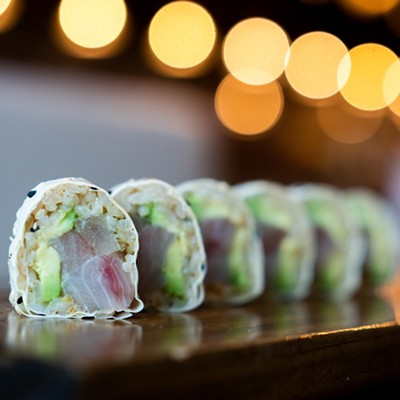The bustling East Texas cattle auction that the Washington Post recently featured in an article about cattle prices couldn't have been more different from the near-empty auction that I attended last fall, during the worst of the 2011 drought.
"Since we've gotten rain and everything, the price has really jumped up," rancher John Dixon told Associated Press reporter Ramit Plushnick-Masti. "They sold at a pretty good level all the way through." Dixon had just purchased a $7,000 cow himself, an incredibly high price for one animal -- but that's going to be the new norm for a while, as cattle prices have already begun to double at auctions like this across the state.
Wrote Plushnick-Masti:
A quality cow that sold last year for no more than $1,800 now fetches about $3,000. The average price for a bull is up $500. And a cow with a 300-pound to 400-pound calf by her side is selling for about $2,800, sometimes more than $3,000 -- almost double the $1,700 they commanded two years ago.
It's exactly the kind of price escalation that our feature, "Meat Market," foretold in January.
As the price of the cattle doubles, you can expect the price of the end product to rise even more over the next several years. Because even if the weather were to be milder and rainier this summer -- which it probably won't be, according to climatologists -- it will still be years before the cattle herds recover to large enough numbers to replenish the nation's severely reduced supply of beef. Restocking a cattle ranch -- if the rancher still has any money or land left after -- can take two to three years due to the slow gestation cycle of buying calves, raising them into cows and then breeding more calves for sale.
"Six, ten years from now," predicted rancher Ronnie Bartley in our cover story, "we won't be able to afford to eat a steak here in the United States if this continues on."
Demand for beef in America remains as high as ever, with 20 billion pounds consumed per year, which means that the few cattle being sold off at auction to packer buyers and slaughterhouses will sell for a lot more money. And those costs will be passed on to consumers at the end of the line. Grocery stores are still remaining mum on their plans for coping with greatly increased beef prices, but some restaurants have already begun Music Man-style routines to persuade consumers that beef is now a luxury item.
"[R]estaurant operators are finding creative ways to provide luxurious and satisfying beef eating experiences at prices they can afford more frequently," noted Nation's Restaurant News in an article from last week. "A proven tactic is to match tasty and tender economical cuts of beef, or smaller portions of premium beef cuts, with original, full-flavored, chef-crafted accompaniments that boost the overall value and appeal of the item."
In other words, restaurants are tricking diners into eating cheaper cuts of beef by pairing the protein with fancier items and giving the dish a snazzy name.
One example cited in the NRN article is the Brasato di Manzo at Atlanta's Double Zero Napoletana. Writes NRN: "It's a dish of tender braised short ribs served with smoked sweet potato puree, veal demi-glace, spicy red cabbage, crispy shallots, pickled sweet peppers and sage. Priced at $25, the bright colors and big flavors of the sides, not to mention the luscious beef, invite patrons to treat themselves well on occasions when they are not ordering Double Zero's $32 grilled beef tenderloin."
But although smart diners may feel swindled by such blatant manipulation, it's important to remember that restaurants have to make a profit somewhere too (besides their wine lists). And if the cost of beef is rising too sharply, maybe it's time to look at other proteins that taste just as good and aren't as expensive: pork, goat or lamb, for example.
And perhaps the lasting effects of the great drought and cattle sell-off of 2011 will be a semi-positive one: Cattle are some of the most inefficient animals to raise as livestock, requiring 20 pounds of feed (often corn-based) to produce just one pound of beef. The price of beef has been artificially deflated for years due to corn and other agriculture subsidies.
Now, due to the drought, consumers are finally seeing prices on beef that are closer to the real dollar amounts of what it costs to raise cattle -- how much it really costs to eat beef. Either way, said Revival Market owner and rancher Morgan Weber earlier this year in our cover story, don't expect the prices to drop even if the cattle herds eventually recover.
"I think it's worse than people realize," said Weber.
"I think the long-term effects are going to be really bad. Prices rarely go back down -- once people get used to buying a certain commodity at a specific price, even if everything goes back to normal, companies realize people are buying this at this price. It's never going to go back down that low."
Follow Eating Our Words on Facebook and on Twitter @EatingOurWords





